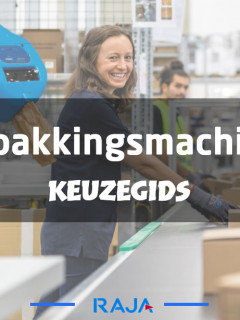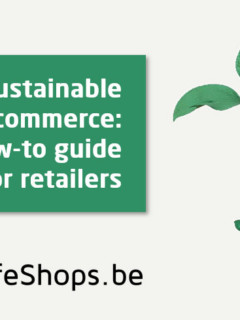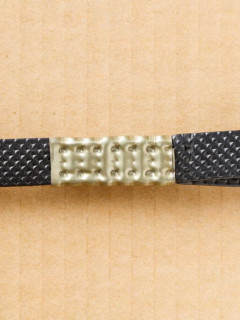How sustainable are you as a webshop? If we ask that question to the average shopper, he will mainly look at your packaging.1 No wonder, because a box or shipping bag is often the only physical point of contact with your company. That paper and cardboard score better than plastic in this regard is probably no real surprise. We therefore introduce you to 5 brand-new alternatives to plastic packaging. Bubble wrap, stretch film or tape… from now on, you no longer need an ounce of plastic. Find out for yourself!
What are the advantages of packaging with paper?
Are you considering opting for paper but not quite convinced of its strengths yet? Then we would like to show you all the advantages of this surprisingly versatile material below.
-
[1] Natural look: with paper, you highlight your company’s ecological image. Not insignificant when you know that 45% of shoppers attach great importance to a company with a sustainable image.1
-
[2] Renewable: paper is made from wood, a raw material that we can grow endlessly. This ensures a smaller impact on the environment and on the use of our raw materials. Good to know: growing trees also removes CO2 from the air and converts it into new oxygen. Not bad huh?
-
[3] Easy to sort: plastic comes in a huge number of different varieties, from PP and PVC to LDPE and ABS. That is extra careful because you may not always sort all that plastic together. Fortunately, this is easier with paper. Any pure paper packaging can be disposed of together and then recycled (or even composted).
-
[4] Strong: paper and cardboard are strong and resistant to sharp edges and corners.
-
[5] Safe: paper is usually free of chlorine and acids. This makes it ideal for packaging printed documents and photos. In addition, it is antistatic. Are you shipping electronics? Then there is no risk of electrostatic discharges that could damage your devices.
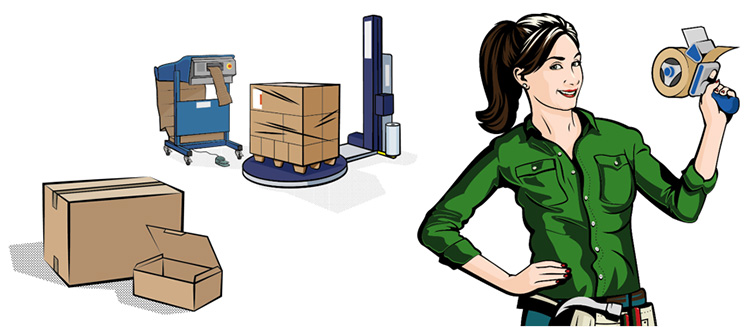
- Preventing the depletion of Europe's raw materials.
- Restoring forests to absorb more CO2.
- Managing Europe's resources in a circular and sustainable way.
Paper fits completely within this concept. For instance, paper products can be recycled several times (up to 7 times) and even composted afterwards. This in turn forms the breeding ground for new plants and trees, allowing us to close the resource cycle.
New in town: 5 paper alternatives to plastic packaging
Did you know that 78% of online shops say they want to make their operations more sustainable in the next 3 years?1 Choosing environmentally friendly(er) packaging material is a step in the right direction. Paper and cardboard are often cited as alternatives to plastic. And with good reason, because paper turns out to be a very versatile raw material. In recent years, new production techniques and designs have shown just how versatile paper really is. Below, we show you some of the latest innovations in packaging. Which ones are you familiar with?
► 1. Paper bubble wrap
One of the most popular protective materials is undoubtedly bubble wrap. Traditionally, this was always made of plastic, and more specifically polyethylene. Looking for a more sustainable alternative that matches your cardboard box in terms of look and feel? Then stop by the paper bubble wrap. This alternative offers the same ease of use as regular bubble wrap, but is instead made from a completely different – renewable – raw material: wood.
Thanks to a unique production technique, it was possible to create paper with a slightly wavy relief structure. Attaching two such paper layers together mimics the effect of air bubbles. The result is a material with excellent shock-absorbing properties. This makes paper bubble wrap ideal for wrapping your fragile products. Extra handy, by the way, is that your customer can simply sort this type of bubble wrap together with his box. Much easier!
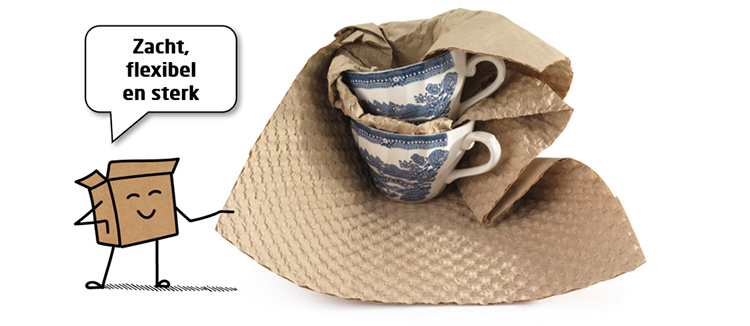
► 2. Paper strapping
In our list of renewable alternatives to plastic, we stop second at strapping. You can often choose from materials such as polypropylene, polyester or steel. What many people may not yet know is that ‘paper strapping‘ also exists. This is mainly used for applications for which you probably needed wrapping film before. Just think of strapping light packages, bundling and securing products, etc.
Compared to wrapping film, paper strapping gives you a lot less residual waste. This also means less consumption of raw materials. Moreover, the paper is fully renewable and recyclable. So you can easily sort it with your paper waste, together with your cardboard boxes. Want to know more? Then take a look at our selection guide for strapping tapes.
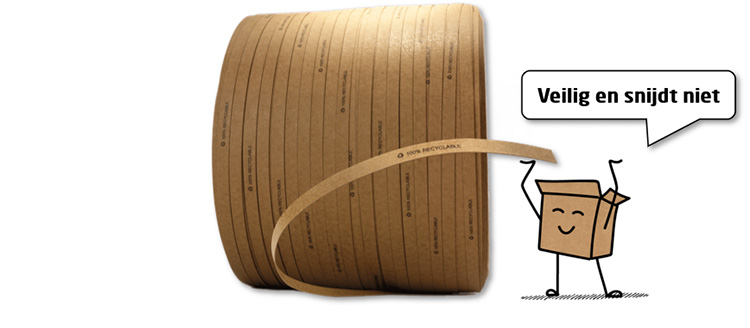
► 3. Paper stretch film
Another paper novelty is found in the world of stretch films. Again, you have probably been familiar with the plastic variants since the very beginning of your career. “Can paper replace a plastic film like that?”, we hear you thinking up to here now… The answer to that is: yes!
Is your pallet load homogeneous in shape (i.e. without protruding parts) and does it weigh no more than 200 kg? Then this paper wrapping film is a great alternative. Good to know: paper wrapping film is elastic up to about 30%. So you can make it fit tightly around your pallet without it tearing. Finally, we should not forget that it is made of wood from sustainably managed forests (PEFC-certified) and is 100% recyclable after use.
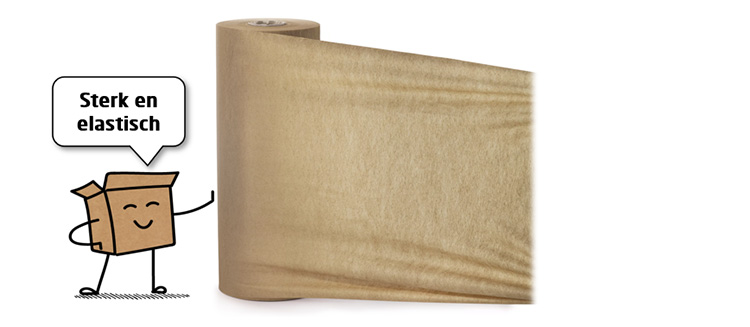
► 4. Honeycomb envelope
Ready for more? Then meet number 4 of our alternatives to plastic: the honeycomb envelope. And no, this envelope has nothing to do with sweet nectar or colourful flowers. The ‘honeycomb’ refers to the shape of the buffer paper on the inside. This paper is punched in the shape of octagons (like honeycombs, that is). This creates a harmonica structure with layers of air in between. This in turn forms the ideal shock absorber! It is precisely for this reason that a honeycomb envelope is often used as an alternative to the plastic air-cushion envelope.
The cushion paper is finished on 2 sides with a protective layer of kraft. This makes the envelope optimally resistant to punctures and tears. No other paper envelope can match it! After use, simply sort the envelope into the paper waste and your job is done.
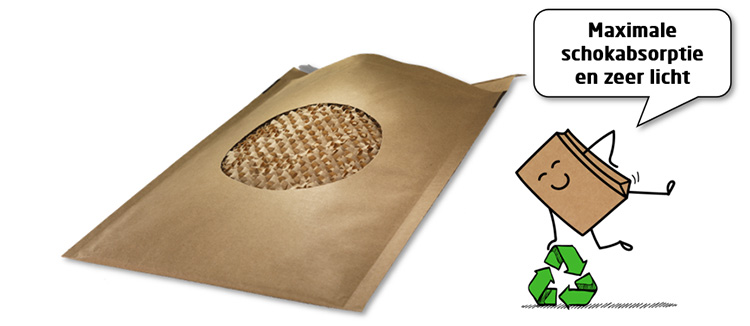
► 5. Reinforced paper tape
We already talked about bundling and protecting your products above. But what about sealing? For that, you need tape. Paper tape is then a logical choice for those looking for an eco-friendly option. However, because standard paper tape is not always sufficient for very heavy boxes, they have also developed an extra-strong variant. So that brings us to innovation number 5: the reinforced paper tape.
This tape is made from needle to thread from natural and renewable materials. We start with the carrier: kraft paper was used for this. This material is resistant to moisture, easily recyclable and reusable. For the adhesive layer, we chose natural rubber glue. It guarantees very strong adhesion to a cardboard substrate. Finally, the reinforcing threads are made of linen, a natural textile material based on flax. It is precisely these threads that transform the tape into a real powerhouse.
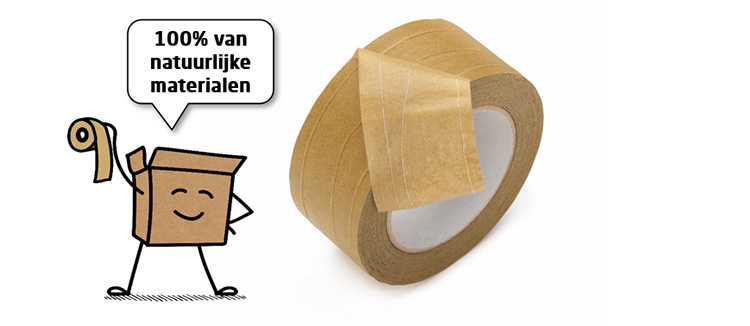
Source:
1 Safeshops – Belgian Online Sustainability Monitor 2021











